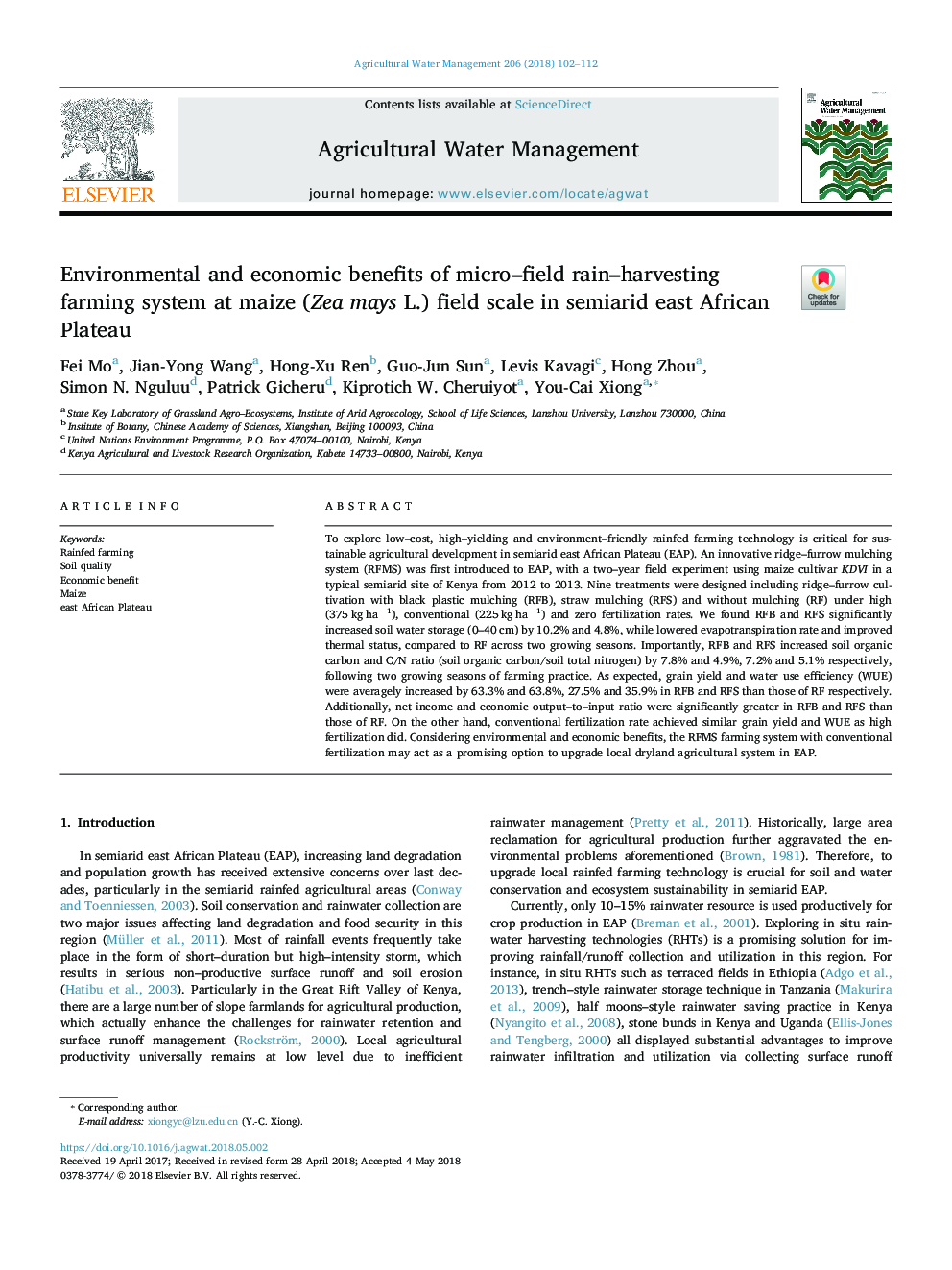| Article ID | Journal | Published Year | Pages | File Type |
|---|---|---|---|---|
| 8872849 | Agricultural Water Management | 2018 | 11 Pages |
Abstract
To explore low-cost, high-yielding and environment-friendly rainfed farming technology is critical for sustainable agricultural development in semiarid east African Plateau (EAP). An innovative ridge-furrow mulching system (RFMS) was first introduced to EAP, with a two-year field experiment using maize cultivar KDVI in a typical semiarid site of Kenya from 2012 to 2013. Nine treatments were designed including ridge-furrow cultivation with black plastic mulching (RFB), straw mulching (RFS) and without mulching (RF) under high (375â¯kgâ¯haâ1), conventional (225â¯kgâ¯haâ1) and zero fertilization rates. We found RFB and RFS significantly increased soil water storage (0-40â¯cm) by 10.2% and 4.8%, while lowered evapotranspiration rate and improved thermal status, compared to RF across two growing seasons. Importantly, RFB and RFS increased soil organic carbon and C/N ratio (soil organic carbon/soil total nitrogen) by 7.8% and 4.9%, 7.2% and 5.1% respectively, following two growing seasons of farming practice. As expected, grain yield and water use efficiency (WUE) were averagely increased by 63.3% and 63.8%, 27.5% and 35.9% in RFB and RFS than those of RF respectively. Additionally, net income and economic output-to-input ratio were significantly greater in RFB and RFS than those of RF. On the other hand, conventional fertilization rate achieved similar grain yield and WUE as high fertilization did. Considering environmental and economic benefits, the RFMS farming system with conventional fertilization may act as a promising option to upgrade local dryland agricultural system in EAP.
Keywords
Related Topics
Life Sciences
Agricultural and Biological Sciences
Agronomy and Crop Science
Authors
Fei Mo, Jian-Yong Wang, Hong-Xu Ren, Guo-Jun Sun, Levis Kavagi, Hong Zhou, Simon N. Nguluu, Patrick Gicheru, Kiprotich W. Cheruiyot, You-Cai Xiong,
